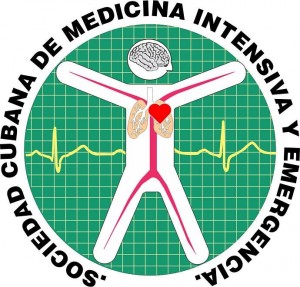Coagulopatía asociada a la hemorragia subaracnoidea aneurismática y sus complicaciones
Palabras clave:
hemorragia subaracnoidea, coagulación sanguínea, vasoespasmo intracranealResumen
Introducción: La hemorragia subaracnoidea aneurismática es un tipo de ictus que se asocia a tasas elevadas de mortalidad y morbilidad debido a las complicaciones asociadas a ella.
Objetivo: Describir el perfil de coagulopatía asociado a la hemorragia subaracnoidea aneurismática y el vasoespasmo.
Métodos: Se realizó un estudio de cohortes prospectivo, con 15 pacientes ingresados por hemorragia subaracnoidea aneurismática en la Unidad de Cuidados Intensivos (UCI), del Hospital Universitario La Paz, Madrid, en el año 2019. Se analizaron variables sociodemográficas, clínicas y analíticas (hematimetría, coagulación convencional y tromboelastometría rotacional) a tres tiempos (día 1, día 3-4 y día 7). El análisis de variables cuantitativas se realizó con t-Student o U-Mann-Whitney y las comparaciones entre grupos con One-way ANOVA, H de Kruskal Wallis, Chi-cuadrado o Fisher, según correspondiera. Se fijó un nivel de significación de 0,05.
Resultados: La tromboelastometría rotacional mostró, en el curso de la enfermedad, una disminución del tiempo de formación del coágulo junto con un aumento del ángulo alfa, amplitud máxima del coágulo, fuerza elástica del coágulo, área bajo la curva y velocidad máxima de formación del trombo. Todo ello junto con una trombocitosis e hiperfibrinogenemia fueron indicativos de hipercoagulabilidad. Los pacientes que desarrollaron vasoespasmo presentaron, en comparación con los que no lo tuvieron, un aumento en el día 7 de plaquetas, amplitud máxima del coágulo, fuerza elástica del coágulo, índice trombodinámico potencial y área bajo la curva, junto con una disminución del tiempo de formación del coágulo, todo ello indicativo de una mayor hipercoagulabilidad.
Conclusiones: En la hemorragia subaracnoidea aneurismática se evidencia un estado procoagulante en el estudio viscoelástico, no objetivable en las pruebas de coagulación convencionales. El vasoespasmo parece inducir un estado de mayor hipercoagulabilidad en los pacientes con la hemorragia subaracnoidea aneurismática, y no permite predecir su aparición.
Descargas
Citas
1. Lawton MT, Vates GE. Subarachnoid Hemorrhage. N Engl J Med. 2017;377:257-66. Disponible en: http://dx.doi.org/10.1056/NEJMcp1605827
2. Grasso G, Alafaci C, Macdonald RL. Management of aneurysmal subarachnoid hemorrhage: State of the art and future perspectives. Surg Neurol Int. 2017;8:11. Doi: 10.4103/2152-7806.198738
3. Cho WS, Kim JE, Park SQ, Ko JK, Kim DW, Park JC, et al. Korean Clinical Practice Guidelines for Aneurysmal Subarachnoid Hemorrhage. J Korean Neurosurg Soc. 2018;61(2):127-66. Disponible en: https://doi.org/10.3340/jkns.2017.0404.005
4. Burns SK, Brewer KJ, Jenkins C, Miller S. Aneurysmal Subarachnoid Hemorrhage and Vasospasm. AACN Adv Crit Care. 2018;29(2):163-74. Disponible en: http://dx.doi.org/10.4037/aacnacc2018491
5. Suarez J, Tarr R, Selman W. Aneurysmal subarachnoid hemorrhage. N Engl J Med. 2006;354:387-96. Disponible en: http://dx.doi.org/10.1056/NEJMra052732
6. Budohoski KP, Guilfoyle M, Helmy A, Huuskonen T, Czosnyka M, Kirollos R, et al. The pathophysiology and treatment of delayed cerebral ischaemia following subarachnoid haemorrhage. J Neurol Neurosurg Psychiatry. 2014;1:1-11. Disponible en: http://dx.doi.org/10.1136/jnnp-2014-307711
7. Muehlschlegel S. Subarachnoid Hemorrhage. Contin J (Minneap Minn). 2018;24(6):1623-57. Disponible en: http://dx.doi.org/10.1212/CON.0000000000000679
8. Serrone JC, Maekawa H, Tjahjadi M, Hernesniemi J. Aneurysmal subarachnoid hemorrhage: Pathobiology, current treatment and future directions. Expert Rev Neurother. 2015;15(4):367-80. Disponible en: http://dx.doi.org/10.1586/14737175.2015.1018892
9. Baranich AI, Polupan AA, Sychev AA, Savin IA, Tabasaranskiy TF, Kurdumova N V, et al. Thromboelastometry as a comprehensive assessment of hypercoagulation after aneurysmal subarachnoid hemorrhage: a case report and literature review. Acta Neurochir Suppl. 2020;1(127):165-9. Disponible en: http://dx.doi.org/10.1212/CON.0000000000000679
10. Wiciński M, Al Drawi AS, Malinowski B, Stolarek W. Evaluation of Vascular Endothelial Growth Factor A and Selected Parameters of Coagulation and Fibrinolysis in a Group of Patients with Subarachnoid Haemorrhage. Biomed Res Int. 2019;2019:8759231. Disponible en: http://dx.doi.org/10.1155/2019/8759231
11. Vahtera AS, Junttila EK, Jalkanen LV, Huhtala HS, Katanandova KV, Hélen PT, et al. Activation of blood coagulation after aneurysmal subarachnoid haemorrhage: a prospective observational trial by rotational thromboelastometry (ROTEM®). World Neurosurg. 2019;122:e334-e341. Disponible en: http://dx.doi.org/10.1016/j.wneu.2018.10.035
12. Miao W, Zhao K, Deng W, Teng J. Coagulation Factor Hyperfunction After Subarachnoid Hemorrhage Induces Deep Venous Thrombosis. World Neurosurg. 2018;110:46-52. Disponible en: http://dx.doi.org/10.1016/j.wneu.2017.09.200
13. Kvint S, Schuster J, Kumar MA. Neurosurgical applications of viscoelastic hemostatic assays. Neurosurg Focus. 2017;43(9):1-9. Disponible en: https://thejns.org/doi/abs/10.3171/2017.8.FOCUS17447
14. Lagares A, Gómez PA, Alén JF, Arikan F, Sarabia R, Horcajadas A, et al. Hemorragia subaracnoidea aneurismática: Guía de tratamiento del Grupo de Patología Vascular de la Sociedad Española de Neurocirugía. Neurocirugia. 2011;22(2):93-115. Disponible en: http://dx.doi.org/10.1016/S1130-1473(11)70007-0
15. Vergouwen MDI, Vermeulen M, van Gijn J, Rinkel GJE, Wijdicks EF, Muizelaar JP, et al. Definition of delayed cerebral ischemia after aneurysmal subarachnoid hemorrhage as an outcome event in clinical trials and observational studies: proposal of a multidisciplinary research group. Stroke. 2010;41(10):2391-5. Disponible en: http://dx.doi.org/10.1161/STROKEAHA.110.589275
16. Steiner T, Juvela S, Unterberg A, Jung C, Forsting M, Rinkel G. European stroke organization guidelines for the management of intracranial aneurysms and subarachnoid haemorrhage. Cerebrovasc Dis. 2013;35:93-112. Disponible en: http://dx.doi.org/10.1159/000346087
17. Lauridsen SV, Hvas CL, Sandgaard E, Gyldenholm T, Mikkelsen R, Obbekjær T, et al. Thromboelastometry Shows Early Hypercoagulation in Patients with Spontaneous Subarachnoid Hemorrhage. World Neurosurg. 2019;130(October):e140-e149. Disponible en: https://doi.org/10.1016/j.wneu.2019.06.019
18. Larsen CC, Hansen-Schwartz J, Nielsen JD, Astrup J. Blood coagulation and fibrinolysis after experimental subarachnoid hemorrhage. Acta Neurochir (Wien). 2010;152(9):1577-81. Disponible en: http://dx.doi.org/10.1007/s00701-010-0699-1
19. Ramchand P, Nyirjesy S, Frangos S, Doerfler S, Nawalinski K, Quattrone F, et al. Thromboelastography Parameter Predicts Outcome After Subarachnoid Hemorrhage: An Exploratory Analysis. World Neurosurg. 2016;96:215-21. Disponible en: http://dx.doi.org/10.1016/j.wneu.2016.04.002
20. Frontera JA, Aledort L, Gordon E, Egorova N, Moyle H, Patel A, et al. Early platelet activation, inflammation and acute brain injury after a subarachnoid hemorrhage: A pilot study. J Thromb Haemost. 2012;10(4):711-3. Disponible en: http://dx.doi.org/10.1111/j.1538-7836.2012.04651.x
21. Frontera JA, Provencio JJ, Sehba FA, McIntyre TM, Nowacki AS, Gordon E, et al. The Role of Platelet Activation and Inflammation in Early Brain Injury Following Subarachnoid Hemorrhage. Neurocrit Care. 2017;26(1):48-57. Disponible en: http://dx.doi.org/10.1007/s12028-016-0292-4
22. Connolly ES, Rabinstein AA, Carhuapoma JR, Derdeyn CP, Dion J, Higashida RT, et al. Guidelines for the management of aneurysmal subarachnoid hemorrhage: A guideline for healthcare professionals from the American Heart Association / American Stroke Association. Stroke. 2012;43:1-39. Disponible en: http://dx.doi.org/10.1161/STR.0b013e3182587839
23. Golanov EV, Bovshik EI, Wong KK, Pautler RG, Foster CH, Federley RG, et al. Subarachnoid hemorrhage – Induced block of cerebrospinal fluid flow: Role of brain coagulation factor III (tissue factor). J Cereb Blood Flow Metab. 2018;38(5):793-808. Disponible en: http://dx.doi.org/10.1177/0271678X17701157
24. Wu C, Lu W, Zhang Y, Zhang G, Shi X, Hisada Y, et al. Inflammasome activation triggers blood clotting and host death through pyroptosis. Immunity. 2019;50(6):1401-11. Disponible en: http://dx.doi.org/10.1016/j.immuni.2019.04.003
25. Rodríguez-Rodríguez A, Egea-Guerrero JJ, Ruiz De Azúa-López Z, Murillo-Cabezas F. Biomarkers of vasospasm development and outcome in aneurysmal subarachnoid hemorrhage. J Neurol Sci. 2014;341:119-27. Disponible en: https://doi.org/10.1016/j.jns.2014.04.020






